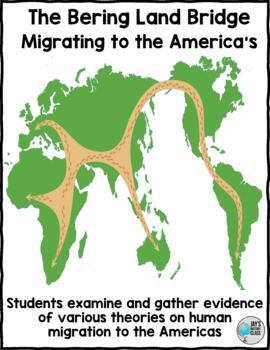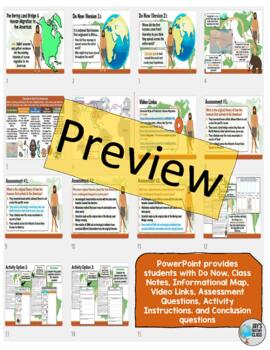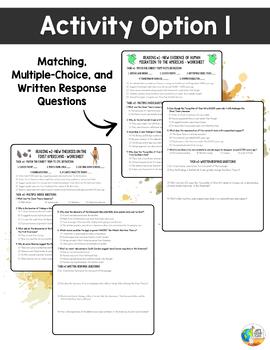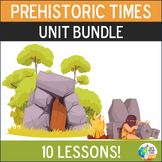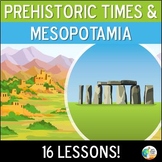The Bering Land Bridge - Theories of Migrating to the Americas
- Zip
- Internet Activities
What educators are saying
Also included in
- This bundle includes 10 lessons in total that are part of a unit on Prehistoric TimesDiscount Bundle Savings! You save 40% by purchasing these resources in this bundle!Lesson Topics include:Otzi the Iceman - WebquestInvestigating Otzi Different Types of Hominids Types of Hominids DBQPaleolithic/NeolPrice $29.99Original Price $49.90Save $19.91
- Prehistoric Times and Mesopotamian Civilizations - Double Bundle This bundle is also divided into two separate bundles. Click the link to go to each:Prehistoric TimesMesopotamian CivilizationsDouble Bundle Discount Savings! You save over 40% by purchasing these resources in this bundle!Lesson TopiPrice $45.99Original Price $78.84Save $32.85
Description
The Bering Land Bridge – Lesson and Activity
The main goal of this lesson is to have students examine the Bering Land Bridge crossing, along with new theories that have emerged on human migration to the Americas
You get a 15 slide PowerPoint with:
- 2 Do Now Options
- Class Notes
- Informational Graphics
- 3 Video Links
- 2 Assessment Questions
- Activity Instructions
- Conclusion questions
3 Different Activity Options are provided which use 2 different resources
- Resource 1 – New Evidence of Human Migration to the Americas (614 words)
- Resource 2 – New Theories Emerge on the First Americans (574 words)
For easier reading, highlighted versions of the readings are also provided!
Activity Option 1: Using the resources, students complete a timeline outlining various theories and evidence of how/when humans came to the Americas.
Activity Option 2: On the graphic organizer for each resource, students describe how each finding potentially disproves the original Clovis theory.
Activity Option 3: Students are provided a question worksheet that asks various questions about the original/newer theories of human migration to the Americas
Full Keys are provided for each activity option!
This lesson has been adapted for digital learning. Students can use apps such as LuminPDF or Dochub to complete and submit the fillable PDF files.
View a video tutorial on how to integrate these digital PDFs into Google Classroom here!

